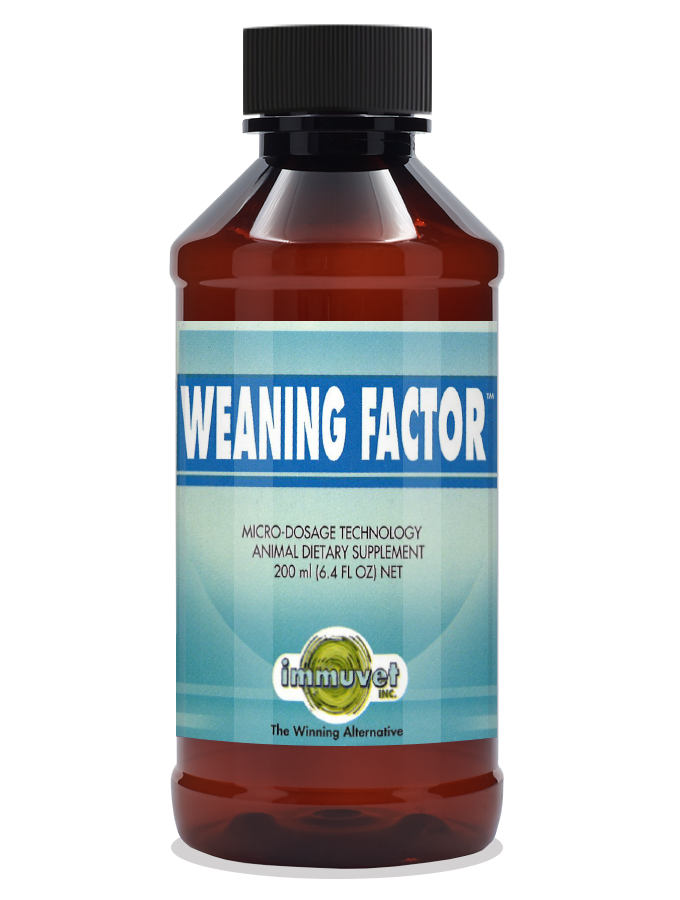What opportunities are available for young horses?
There are many competitive opportunities for young horses. Many young horses are shown in weanling and yearling halter futurities. A high percentage of long yearlings are ridden to prepare them for 2-year-old performance classes. Racehorses sometimes race competitively before their 2-year-old birthday. Horses that either win or place in these events receive high sale prices and/or earn large prize pools. To be successful in future competitions, young horses have to be as mature, healthy, and sound as possible when going into conditioning and training programs. To ensure this, practicing good management of the young horse is extremely important, especially during the weaning process.
How are foals affected by weaning?
The traditional weaning time is usually when the foal is about 5-6 months of age. Foals are weaned in an abrupt manner, which means they are separated out of sight and sound of their dams. Weaned foals are often taken to strange surroundings, dewormed, vaccinated, castrated, halter broken, and offered feed for the first time. In response, foals frantically neigh, fret, run, get hot, don’t eat (or overeat), etc. The most common physiological response to stress is an increase in cortisol (an adrenal gland steroid) circulating in the blood. Several studies suggest that high levels of cortisol may suppress the normal function of the immune system and impair the foal’s ability to resist diseases. Hence, anything that minimizes weaning stress should also aid foals in resisting infection or disease. The stress of weaning can also cause foals to suffer from weight loss, injuries, and more. Foals weaned in an abrupt manner often take 3-4 weeks to recover from the weaning process.
How can weaning stress be minimized?
There are a number of things that can reduce weaning stress. Start their foal health program well in advance of weaning. Foals should be dewormed at 4-6 weeks of age and receive their initial immunizations at 2-3 months of age. Handle foals as quietly and calmly as possible. These practices will lead to healthier foals that are accustomed to being handled at weaning time. Have the foal creep feed at 2-3 months of age. Feed a clean, fresh, completely balanced 16-18% CP concentrate to meet the foal’s nutrient requirements. Provide the foal some high-quality pasture and/or hay for foals. In other words, have foals safely “on feed” well ahead of weaning time. Limit or omit the lactating mare’s concentrate 7-10 days before weaning. Provide mares with no or limited concentrate with high-quality pasture or grass hay to slow down their milk production. Mares producing less milk may be more comfortable while weaning. In addition, foals will receive less milk during this period, which will decrease their dependence on their mothers. Evaluate the physical facilities (stalls, paddocks, pens, or pastures) to identify the best arrangement for weaning. Weaning facilities should be safe, not allow the foal to jump fences or squeeze through small spaces, etc. Foals should be able to see, smell, and hear their dam, just not be able to nurse. Weaning areas should be clean, well-ventilated, and as free as possible to keep foals from developing respiratory problems. Provide shade, clean fresh water, and the same creep feed from before weaning in safe feeders. Do not change feeds during the weaning time! When weaning, physically separate the foals from their dams to where the foals can’t nurse. One method is to place a foal, or a pair of foals, in a stall and place their dam(s) on each side in adjacent stalls. Leave the mares there for 3-4 days, then remove them. Another popular method for weaning large groups of foals is to place several foals in a small pen or paddock and give all mares access to the pen or paddock. Mares should be able to see, smell, and hear their foals, and visa versa. On day one, remove one mare, preferably the mare with the most independent foal. Progressively remove one mare each day until all of the mares are removed and the weaning of all pairs is complete. Weaning can be one of the most stressful times in a young horses’ life, but it doesn’t have to be if proper management is practiced. Preparing for weaning and utilizing gradual weaning techniques will reduce stress, minimizing injuries and disease while maximizing growth.
References
Land & Livestock Post. The Eagle, www.landandlivestockpost.com/commentary/072901hunteronweaning.htm.
Texas A&M University, randall.agrilife.org/publications/minweaningstress.pdf.
Texas A&M University, windmill.tamu.edu/D1/Randall/AG/Livestock/Horses/min.weaningstress.pdf.
Immuvet® Products are manufactured by Amino Cell Inc.


